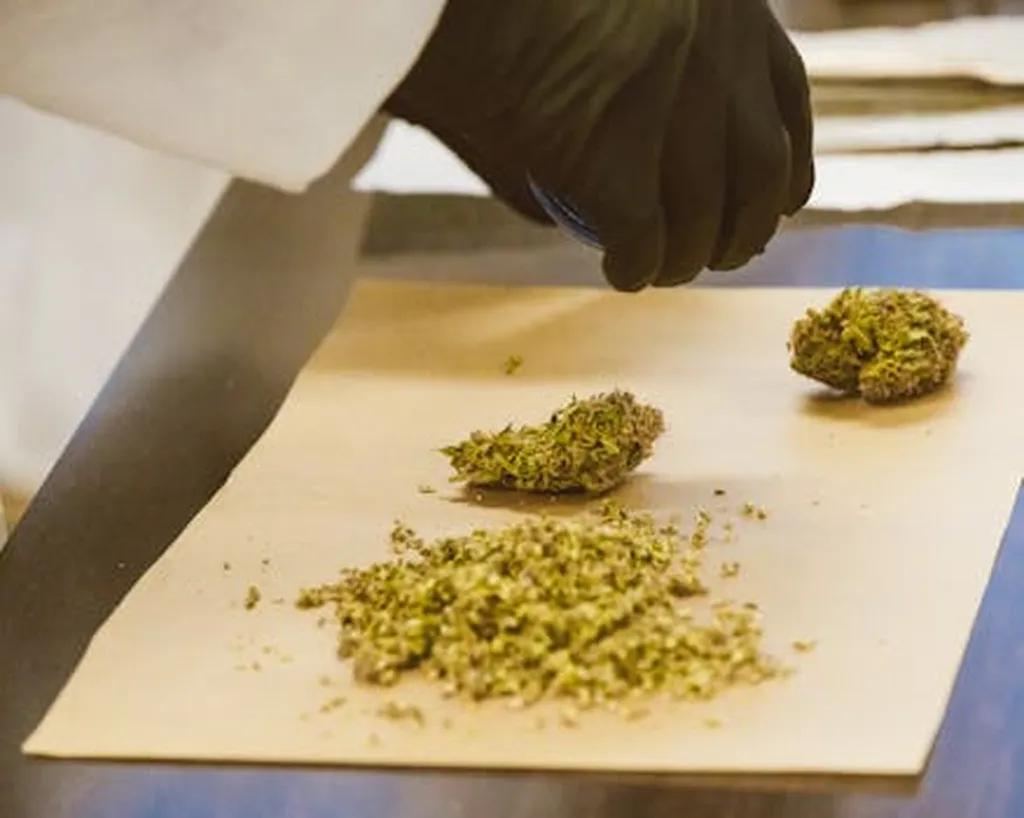In the sun-drenched coastal regions of Apulia, Italy, a humble halophytic plant, *Salicornia europaea* L., is gaining attention not just for its culinary uses but for its potential as a powerhouse of bioactive compounds. Researchers, led by Francesco Limongelli from the Department of Pharmacy-Drug Sciences at the University of Bari Aldo Moro, have developed a sustainable extraction method that could revolutionize how we harness the plant’s antioxidant and antimicrobial properties. This innovative approach, detailed in a recent study published in the journal *Molecules* (known in English as “Molecules”), combines natural deep eutectic solvents (NADESs) with ultrasound-assisted extraction (UAE), offering a green and efficient way to recover valuable compounds from *S. europaea*.
The study’s significance lies in its dual focus on sustainability and efficacy. By leveraging NADESs, which are environmentally friendly solvents derived from natural components, the researchers have circumvented the need for harsh chemicals typically used in extraction processes. “The use of NADESs not only aligns with green chemistry principles but also enhances the solubility and stability of the bioactive compounds we aim to extract,” explains Limongelli. This method is particularly promising for the energy sector, where the demand for sustainable and efficient extraction techniques is growing.
The researchers screened 61 NADES combinations using COSMOtherm software, focusing on the solubility of isorhamnetin, a major flavonol in *Salicornia* spp. From this screening, six NADESs were selected and prepared for the extraction process. Among these, the combination of proline and malic acid (Pro:MA) stood out, exhibiting the highest total phenolic content (TPC) and robust antioxidant activity. “The Pro:MA extract showed remarkable antioxidant properties, with DPPH IC50 values as low as 0.09 mg GAE/g and significant activity in ABTS and FRAP assays,” notes Limongelli. This extract also demonstrated strong antibacterial activity against four ATCC bacterial strains, including *Enterococcus faecalis*, *Escherichia coli*, *Klebsiella pneumoniae*, and *Staphylococcus aureus*, with minimum inhibitory concentrations (MICs) ranging from 0.1% to 0.4% v/v.
The stability of the Pro:MA extract over a 90-day storage period further underscores its potential for commercial applications. “The stability of the extract is crucial for its viability in the food, pharmaceutical, and cosmeceutical sectors,” Limongelli emphasizes. This stability, coupled with the extract’s high antioxidant and antimicrobial activities, positions *S. europaea* as a valuable resource for developing new products.
The implications of this research extend beyond the immediate applications. By demonstrating the efficacy of NADES-UAE in extracting bioactive compounds from halophytes, the study opens doors for similar approaches in other plant species. This could lead to a more sustainable and efficient extraction of bioactive compounds, reducing the environmental impact of current methods.
As the world increasingly turns to natural and sustainable solutions, the work of Limongelli and his team highlights the potential of halophytic plants like *S. europaea* to contribute to a greener future. Their findings not only advance our understanding of these plants but also pave the way for innovative applications in various industries. With further research and development, the NADES-UAE method could become a cornerstone of sustainable extraction processes, benefiting both the environment and the economy.

